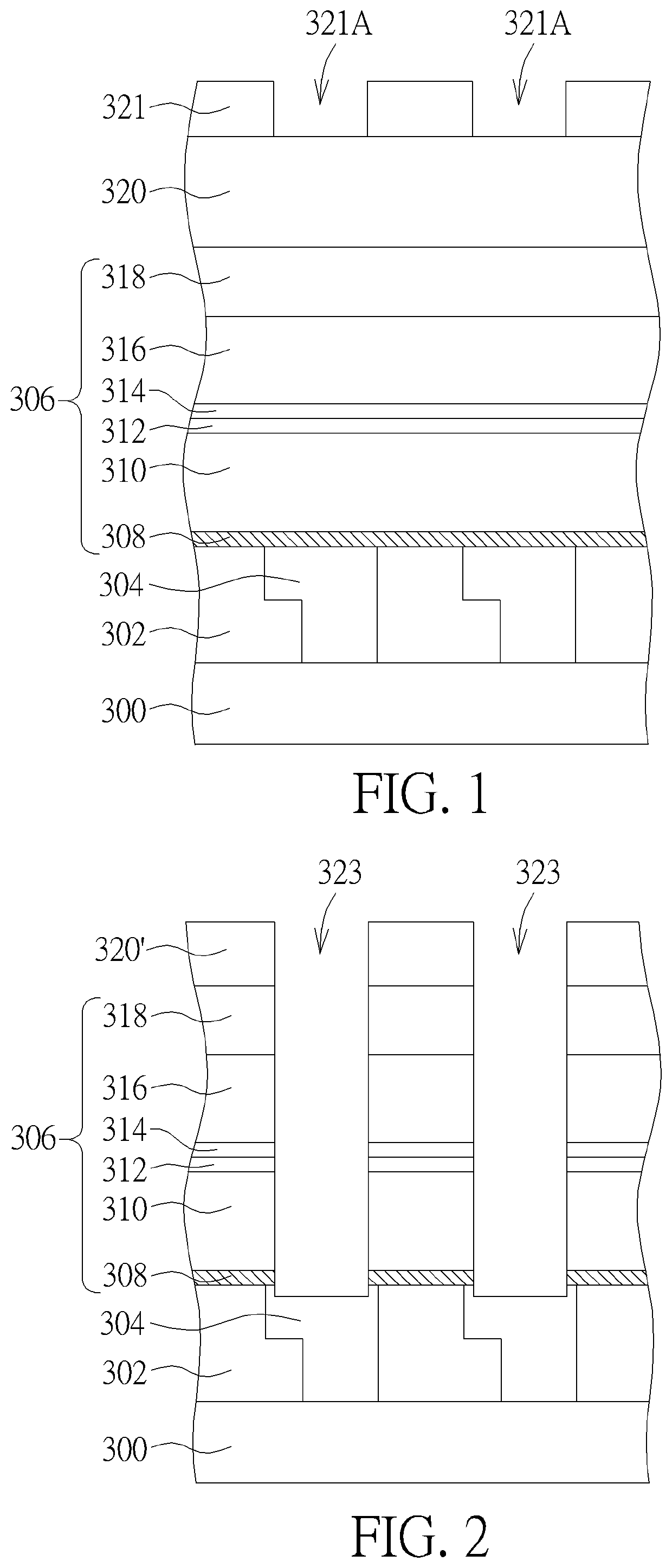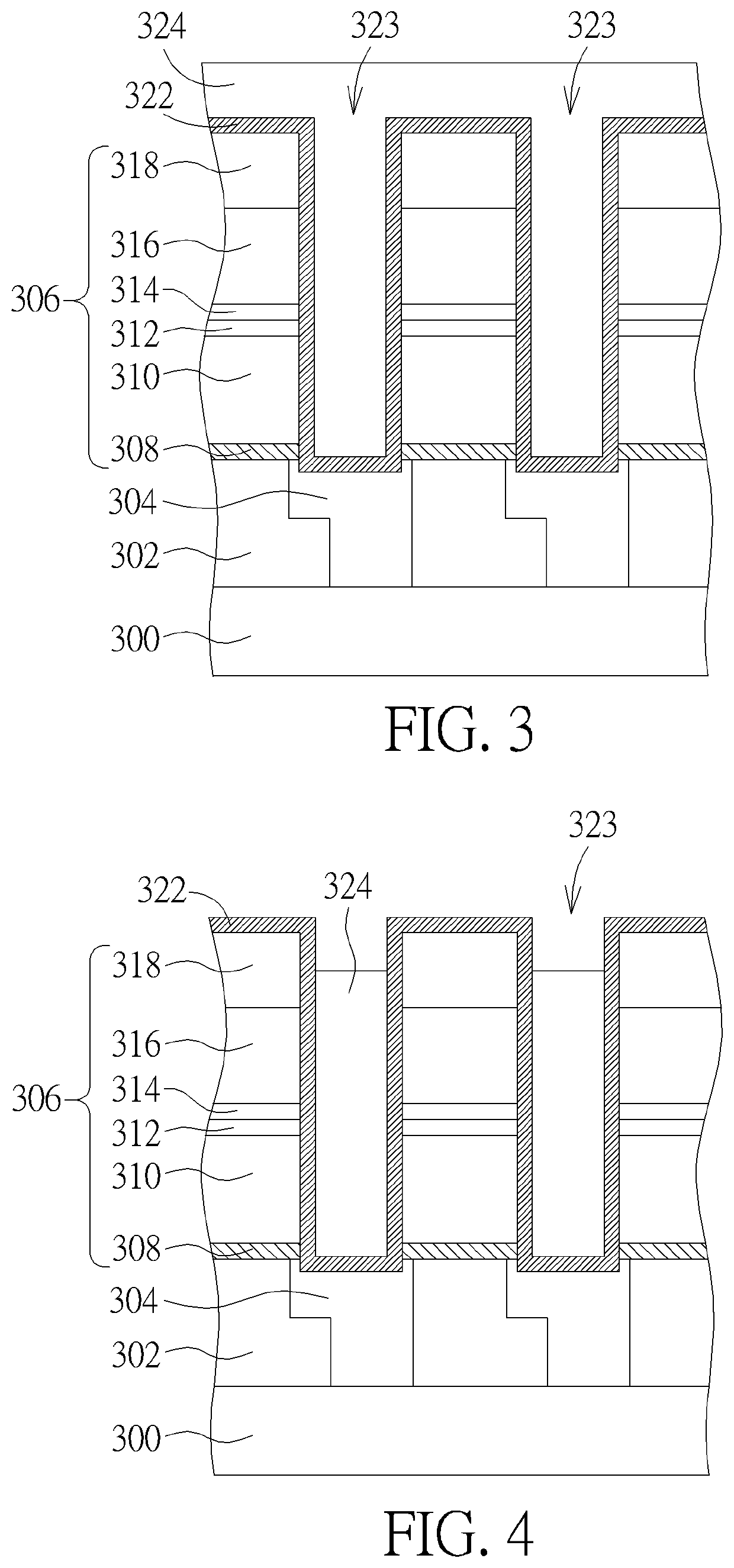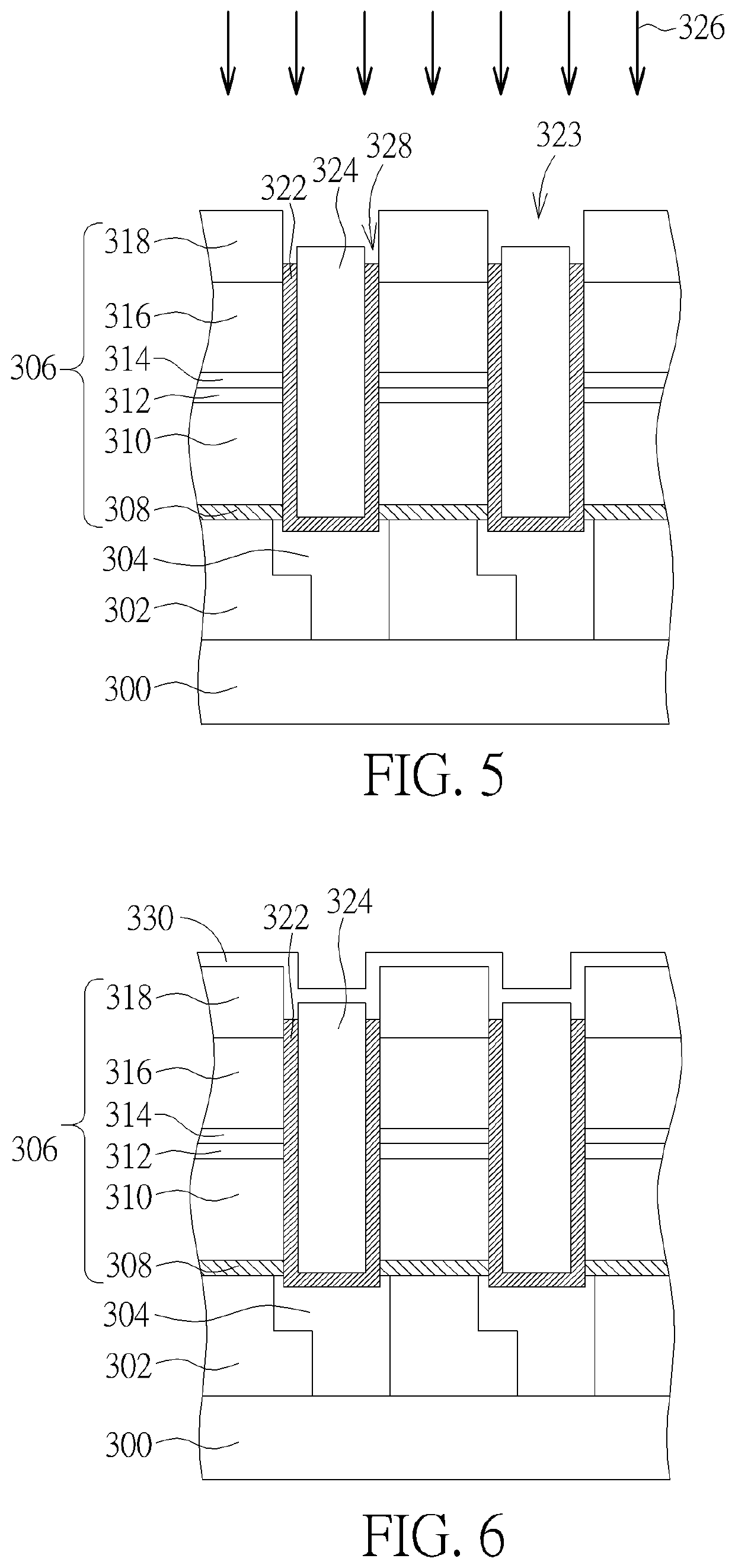Method of forming memory capacitor
a memory capacitor and capacitor technology, applied in the direction of capacitors, semiconductor devices, electrical apparatus, etc., can solve the problems of low storage capacity, high refresh frequency, affecting the performance of dram devices, etc., and achieve the effect of improving accuracy and high reliability
- Summary
- Abstract
- Description
- Claims
- Application Information
AI Technical Summary
Benefits of technology
Problems solved by technology
Method used
Image
Examples
Embodiment Construction
[0011]To provide a better understanding of the presented invention, preferred embodiments will be described in detail. The preferred embodiments of the present invention are illustrated in the accompanying drawings with numbered elements.
[0012]Please refer to FIG. 1 to FIG. 10, which are schematic diagrams showing the method of forming a memory capacitor according to one embodiment of the present invention. As shown in FIG. 1, a substrate 300 is provided. The substrate 300 may include a substrate having a semiconductor material, such as a silicon substrate, an epitaxial silicon substrate, a silicon germanium substrate, a silicon carbide substrate or a silicon-on-insulator (SOI) substrate. In one embodiment, the semiconductor substrate may have a plurality of electronic components such as access transistors (not shown) disposed thereon. In one embodiment, the access transistor can include a horizontal gate, a recess gate, or a vertical gate. Next, a dielectric layer 302 and a plurali...
PUM
| Property | Measurement | Unit |
|---|---|---|
| wavelength | aaaaa | aaaaa |
| sizes | aaaaa | aaaaa |
| area | aaaaa | aaaaa |
Abstract
Description
Claims
Application Information
 Login to View More
Login to View More - R&D
- Intellectual Property
- Life Sciences
- Materials
- Tech Scout
- Unparalleled Data Quality
- Higher Quality Content
- 60% Fewer Hallucinations
Browse by: Latest US Patents, China's latest patents, Technical Efficacy Thesaurus, Application Domain, Technology Topic, Popular Technical Reports.
© 2025 PatSnap. All rights reserved.Legal|Privacy policy|Modern Slavery Act Transparency Statement|Sitemap|About US| Contact US: help@patsnap.com



